
Located at the foot of the picturesque Swiss Alps, Zurich is the largest city in Switzerland as well as one of the world's most important financial centers. With high-end shopping, charming urban scenery and mouthwatering chocolates, the city annually attracts swarms of foreign visitors. While the vast majority of tourists usually stick to city's globally renowned sites, Zurich also boasts dozens of hidden gems and unusual places to explore, eight of which are gathered on the following list.
Up until recent decades, shipping containers were seen as a purely utilitarian mean to transport goods across the vast expanses of the oceans. Amid growing environmental consciousness, more and more unused containers end up as building blocks for unusual buildings. One such case is Zurich’s Freitag Tower, nestled next to Hardbrücke Central Station.
Towering 26 meters (85 feet) over the city’s former industrial zone, this shipping containers skyscraper is made up of 9 units stacked on each other. The eye-catching structure serves as the flagship store of the Freitag bag company. This company is devoted to making bags from fully recycled materials like truck tarps and bicycle tires and tubes. In fact, the Freitag Tower is home to the world’s largest collection of “plastic freeway bags”, amounting to a whopping 1,600 bags.
To make things even better, the tower’s ninth floor has an outdoor observation deck that offers a breathtaking view of the city’s Industriequartier and beyond. Located adjacent to the Freitag Tower is the Frau Gerolds Garten. This outdoor gathering place changes with the seasons. During the warmer months there are open air bars, a garden kitchen as well as sun terraces. During the winter months you can find camp fires throughout the gardens. There are small, locally owned shops as well as different activities and events being held throughout the year.

The Freitag Tower, consisting of 9 shipping containers stacked on each other
photography by: Tschubby/ Wikimedia Commons
Located about 10 kilometers from Downtown Zurich, the town of Schileren was a regional industrial powerhouse for most of its recent history. Whereas nowadays this Zurich’s suburb is far more hi-tech oriented, it still abounds with relics from its bygone era. Once a part of a four gas-holder cluster, the Gasometer no.1 of Schileren was built in 1898, and is the only extant structure of its kind across Switzerland. At its heyday, this industrial vestige used to illuminate the streets of Zurich and later, also as a heating source for homes during wintertime.
Along with its 3 counterparts, the plant had an average capacity of 25,000 cubic meters of gas, making it by far the largest energy plant throughout the country at that time. Following technological advancements, the gas storge facility was rendered obsolete and ceased all operations in 1974. After dodging the grim fate of its siblings, all of which were demolished, Gasometer no.1 was ultimately preserved in 2005. Its skeletal remains are closed for the public most of the year for safety reasons, albeit this former technological marvel is remarkably impressive even for mere onlookers.
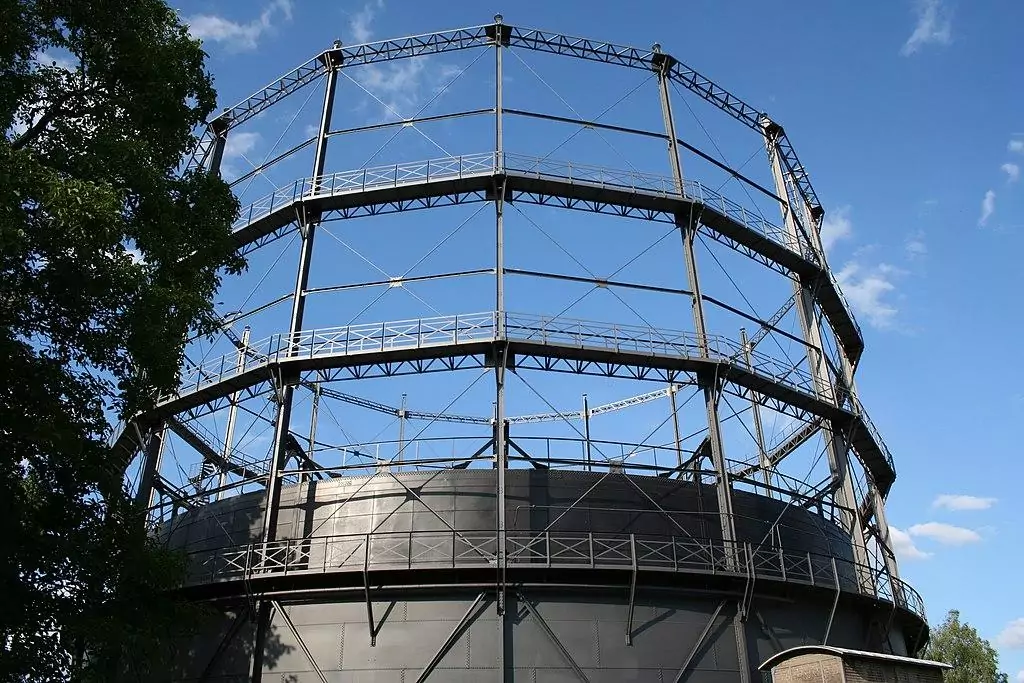
The iconic skeletal frame of Gasometer no.1 of Schileren
photography by: Ikiwaner/ Wikimedia Commons
Complementing Zurich’s rich urban scenery is a series of natural nooks that function as the city’s green belt. Ensconced in the eastern outskirts of Zurich, Adlisberg is a wooded hill with dozens of hiking trails and recreational facilities. Rising above the dense forest is the Loorenkopf Lookout Tower. Constructed in 1954 by the local municipal beautification association, the wooden tower is merely 33 meter tall (100 feet). However, when taking into account its elevation, the tower surpasses most of the world’s famous skyscrapers, reaching a height of 690 meters.
The timber structure has a 152-step spiral staircase that leads to a pair of viewing platform and an observation deck, situated at the top of the tower. The 30-meter-tall observatory is blessed not only with a stunning panoramic view of the city, but also with a distant glimpse of several alpine peaks, including Jungfrau, Mönch and Eiger. The Loorenkopf Lookout Tower is about 2 kilometers away from Bergstation Dolderbahn funicular station, and is accessible through a 25-minute hike along a wooded trail.

Loorenkopf Lookout Tower and its upper observation deck
photography by: Roland zh and Tschubby/ Wikimedia Commons
As the name implies, Lake Zurich or Zürichsee, is Zurich’s main geographical feature, with much of the lake’s northwestern tip being located within the city itself. Whilst there aren’t many swimmable parts in the downtown area, a single public bath stands out as one of the only places where locals and visitors can dip in the waters of the lake. Tucked away along Zürichsee’s eastern shore, Strandbad Tiefenbrunnen is a historic water park, originally created in 1886.
In 1954, the complex was redesigned by Otto Dürr, Joseph Schütz and Hans Nussbaumer who facelifted the lido according to the living garden style. Among its well-maintained facilities are open air spa, sun terraces and a verdant park, however, the true centerpiece of Strandbad Tiefenbrunnen is its outdoor circular pool. Protruding into the lake, the pool is bestowed with stunning vistas of the lake and the nearby Alps. The wooden perimeter deck that gives the pool its round shape also serves as a sunbathing platform during the summer months.
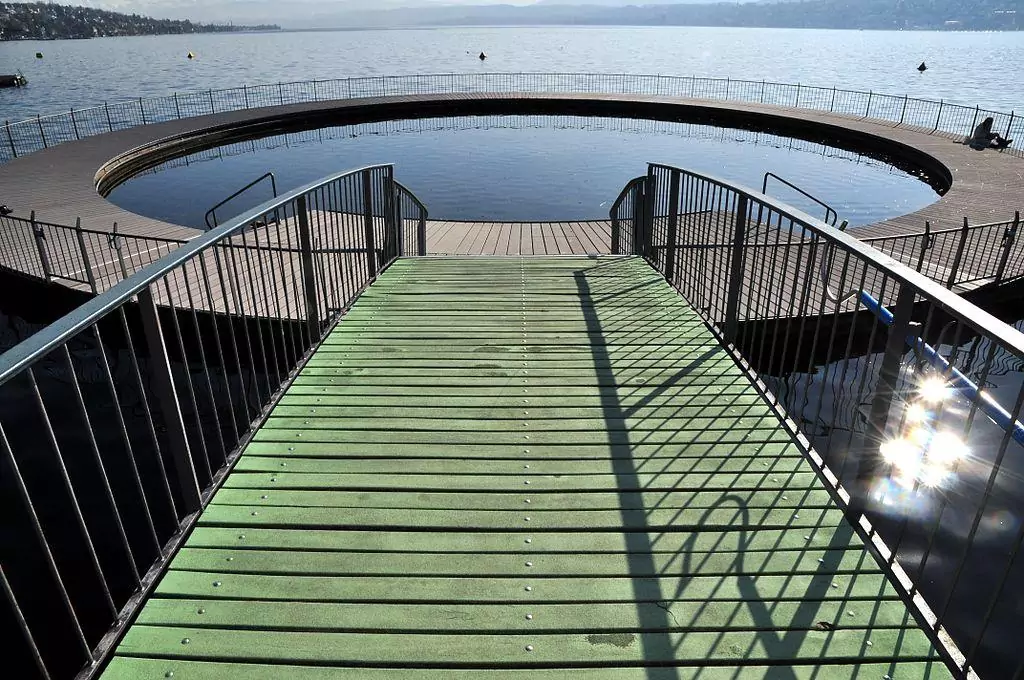
Strandbad Tiefenbrunnen's iconic circular outdoor pool
photography by: Roland zh/ Wikimedia Commons
All over the world, parks come in many sizes and forms, and yet, one park in Zurich’s northern district of Oerlikon defies everything we tend to associate with this term. Previously the site of Maschinenfabrik Oerlikon company, where electric locomotives were mass-manufactured as early as the 19th century. Following the purchase of Maschinenfabrik Oerlikon, which was followed by an urban revival process throughout the neighborhood, the former factory was redeveloped in 2002 into an unusual public park.
Named after its predecessor (Maschinenfabrik Oerlikon), the MFO park fits exactly to a land plot where one of the factory’s buildings once stood. Unlike ordinary gardens, the park doesn’t have any lawns or woodlands. Instead, a 35-meter wide, 100 meter long and a 17-meter-tall steel-frame structure provides an ample habitat for a plethora of creepers that form a vertical garden that spans across the park’s multiple trellis.
Sandwiched between the structure’s double walls is a set of staircases that grant access to a series of platform and balconies which protrude inwards. The crown-jewel of the MFO Park however is its rooftop terrace, offering stunning views of Zurich’s northern parts. Interestingly, this hanging garden changes according to the current season, as the climbing plants are either leafless during the winter, blooming during the spring, green during the summer and strikingly red during the autumn.

MFO Park's green walls, made of steel frame and climbing plants
photography by: Roland zh/ Wikimedia Commons
Like many European countries, Switzerland has no shortage of lavish castles that mirror the continent’s rich cultural heritage. In contrary to the awe-inspiring palaces that attract zillions of tourists, some castles are abandoned and well-hidden, making them incredibly off-the-beaten-path places. Tucked away in the middle of Uetliberg’s hilly forest, west of Zurich, not much is left of Friesenberg Castle these days. Nevertheless, the castle’s deep forest location coupled with the lack of visitors contrasts its otherwise dystopian state.
Although its actual age was never fully verified, it is estimated that this fief dates back to the 11th century, when the country was governed by the feudal system. Perching on a spur that juts out of the steep slope around, the medieval castle was once owned and managed by the Mülner family, known for its formidable knights. Amid growing tensions between the different noble families who ruled over the region, the castle was ultimately ravaged somewhere around 1300. More than 6 centuries later, the ruins were excavated and partly reconstructed by the local authorities. As of today, the fort is accessible via a wooded hiking trail, and thanks to its high elevation, serves as a scenic point, from where one can gaze at the city below.
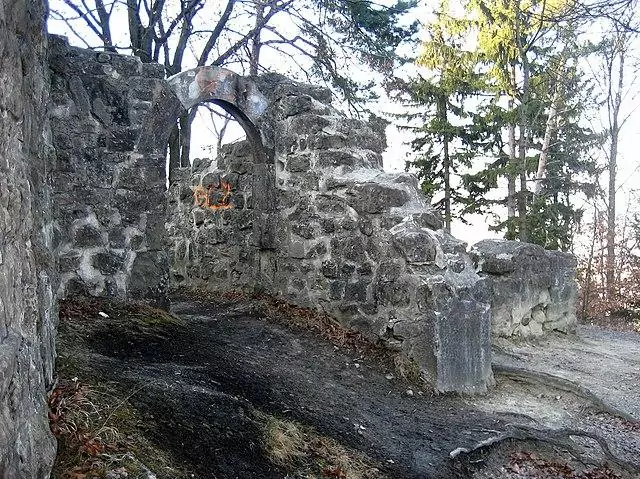
The partly reconstructed ruins of Friesenberg Castle
photography by: Roland zh/ Wikimedia Commons
As you’ve probably realized by now, Zurich abounds with scores of former industrial facilities that were converted into a public or commercial use. Nestled along the shore of Lake Zurich, Rote Fabrik is among the city’s most conspicuous repurposed buildings. Erected in 1892 as a silk mill, Rote Fabrik (Red Factory) definitely lives up to its name, with its façade being dominated by red bricks.
Following its decommission in 1972, the municipality of Zurich designated the building for demolition, as it sought to widen the nearby street. However, a political campaign by the Social Democratic Party, followed by massive demonstrations and riots of young activists, who wanted to convert the edifice into a cultural youth center, ultimately turned the tide and forced the authorities to revise their initial plans.
Inaugurated in 1980, the Rote Fabrik cultural center has been serving as an alternative venue for theater shows, music concerts and other types of events ever since. In fact, many of the world’s most famous artists performed at the center way before they became globally famous, including the Red Hot Chili Peppers and Nirvana. Besides the building’s main function as a hub for alternative culture, it is also home to a modern-art gallery, a restaurant and a mind-boggling array of murals and graffiti. If you wish to attend a live concert, please check Rote Fabrik’s website for more details.
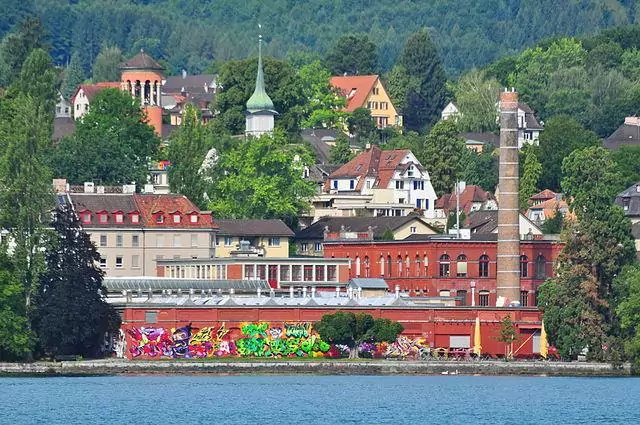
Rote Fabrik's graffitied façade, as seen from Lake Zurich
photography by: Roland zh/ Wikimedia Commons
At first glance, the verdant hill, known as Monte Diggelmann, on Zurich ‘s northern outskirts, might seem like a seamless part of the city’s extensive natural landscape. Nonetheless, little do people know that this grassy knoll is actually the result of a persistent battle by one person who fought against an entire system.
In 1962, as the University of Zurich sought to expand northwards to the empty tracts of land of Oberstrass district, it designated an area named “Irchel” for its brand-new campus. Surprisingly, it faced a fierce opposition from a single person – Walter Diggelmann, the then president of the district association of Oberstrass. While Digglemann eventually lost his struggle, when the plan for the new campus was approved, he managed to save a small percentage of the land from development.
Subsequently, 15 percent of the original campus plan was allocated as a natural zone. The 6-meter-tall Monte Diggelmann was created in the early 1970’s from the excavated soil that was accumulated during the construction of the nearby campus. Nowadays, the artificially built hill serves as a lookout with incredible views of Zurich downtown, the Limmat valley, the Lägern ridge as well as the city’s international airport. Every winter, the green heap also becomes a popular tobogganing spot among locals.
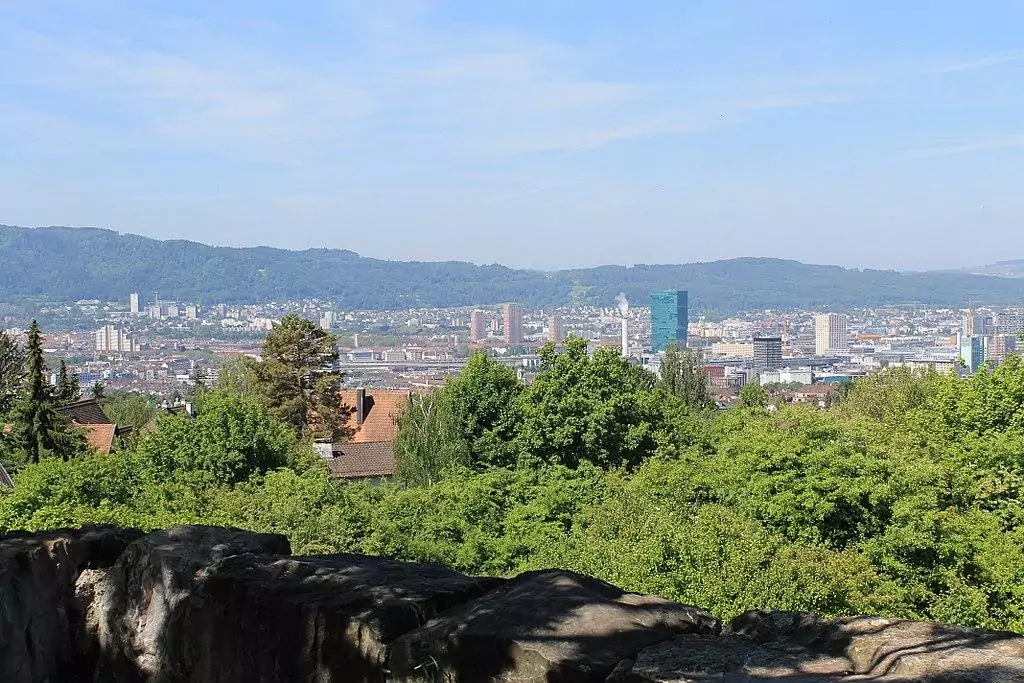
The spectacular panorama of Zurich downtown from Monte Diggelmann
photography by: Patrick Nouhailler/ Wikimedia Commons